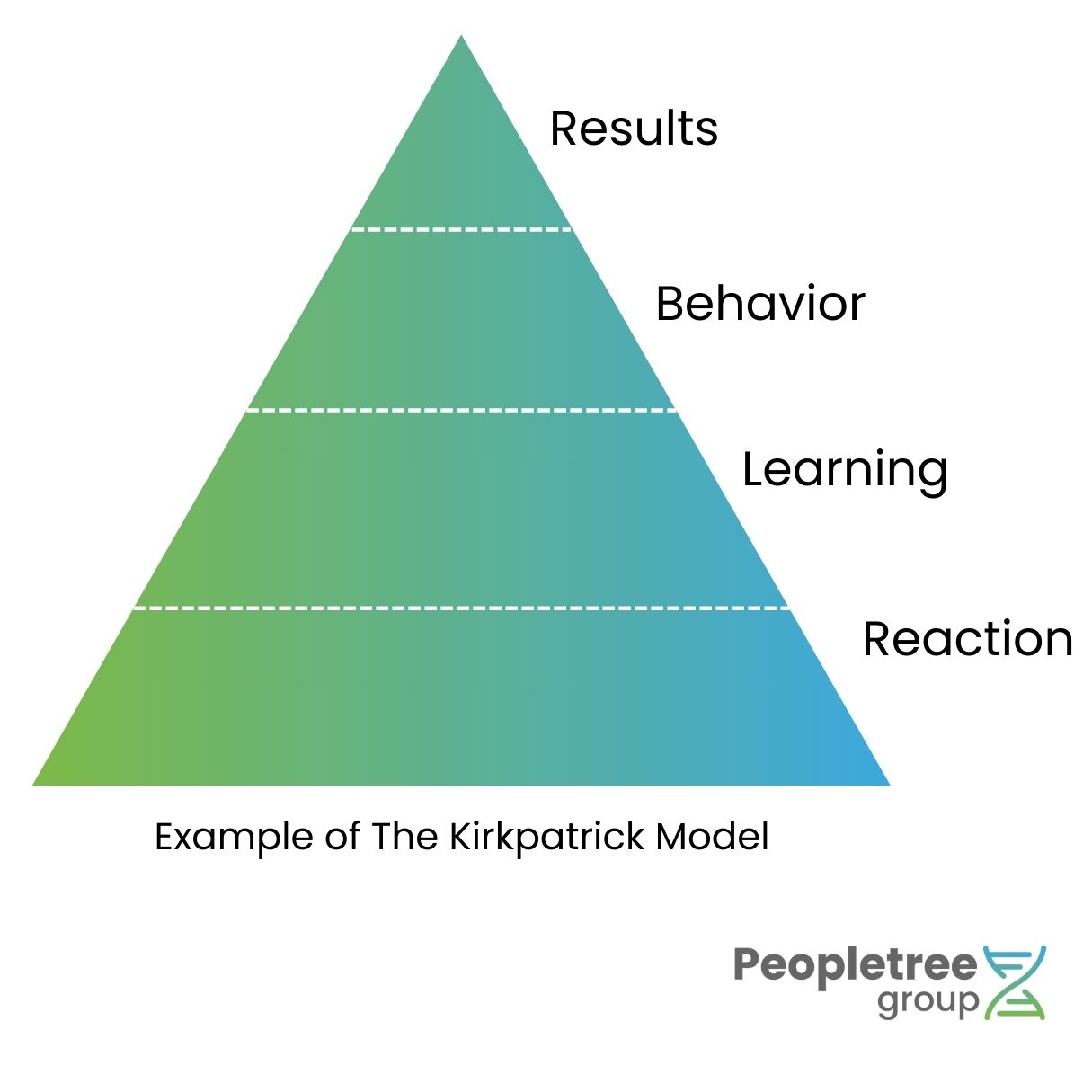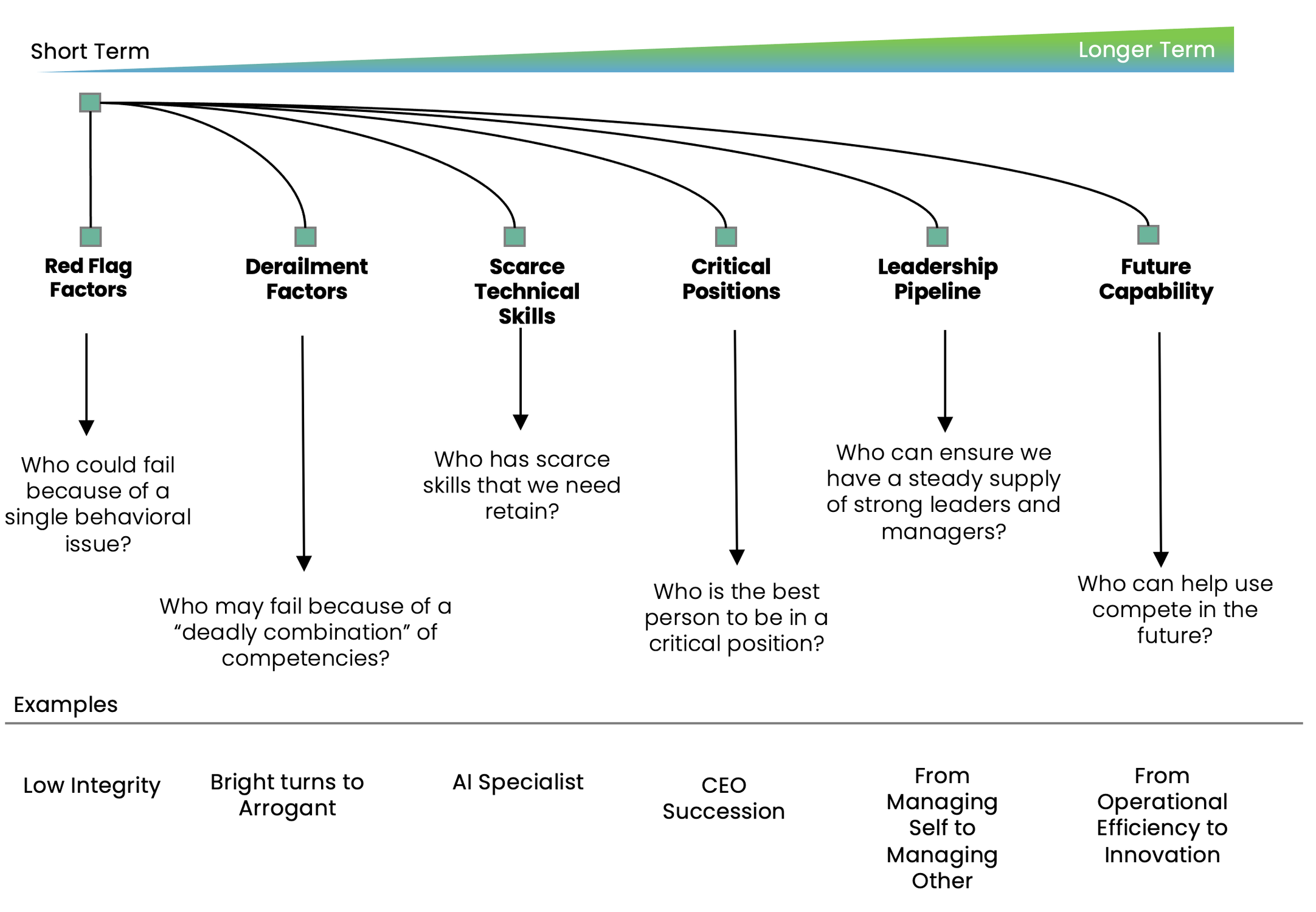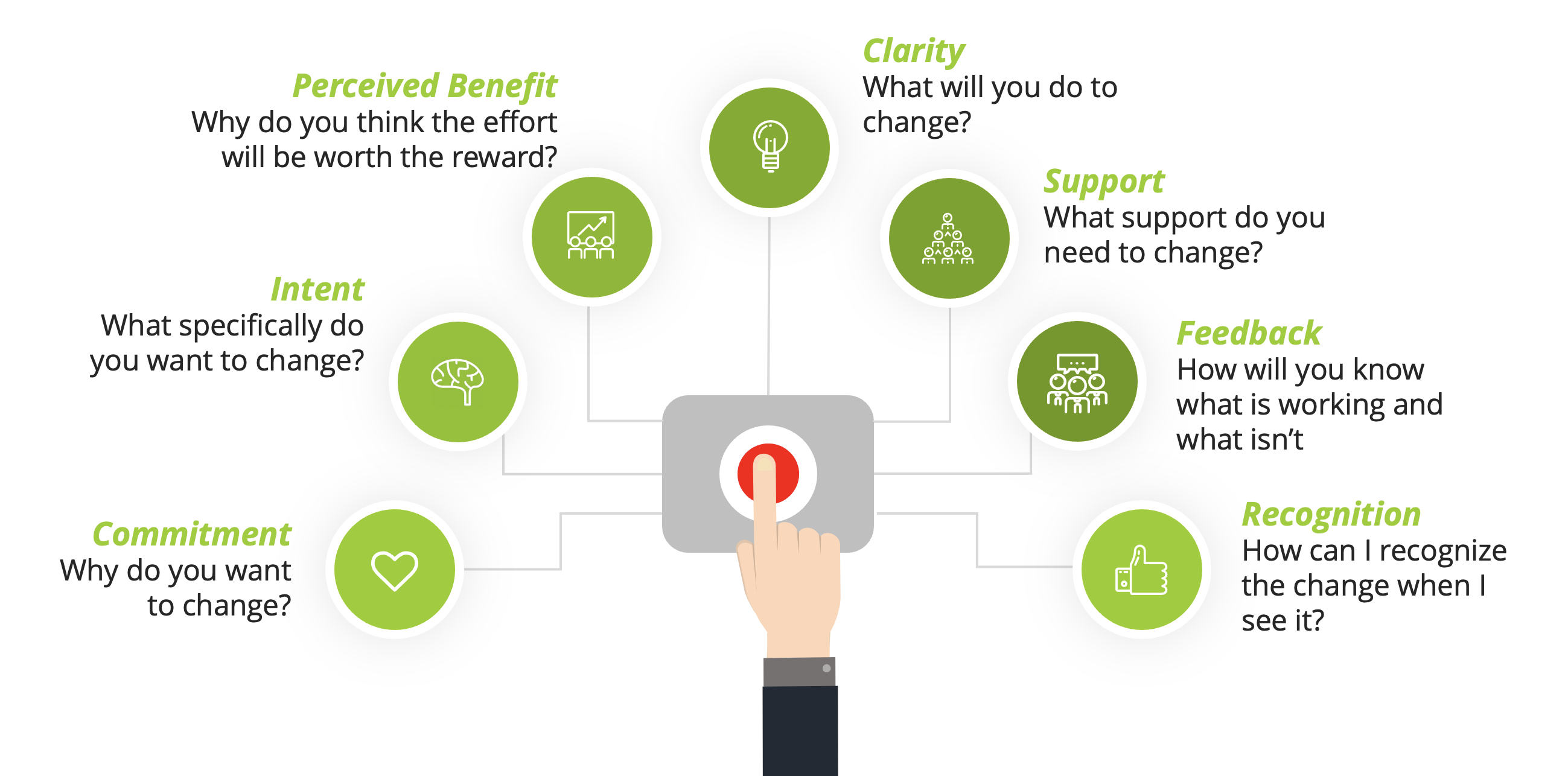Talent development requires an investment. Sometimes the investment is money, but mostly it’s time and effort. When you take an investment approach to learning, you have to ask the question:
"Will the benefit I get from this investment be greater than the effort I put in?"
To answer this question accurately, we need to be clear about the amount of effort required and the value of the expected benefits.
In this article we cover the critical ‘who’ questions you should answer before making talent development investments, and how to find the answers to them to get the best return.
View all articles in the series
This is part two in a series of articles about "Answering the Question of Who."
The 'who' questions you need to answer when creating a talent development strategy
Here are some common ‘who’ questions that business leaders ask HR about talent development:
- Who should we develop as our next generation of leaders?
- Who needs to develop specific skills and/or attributes to perform better in their current role?
- Who will benefit the most from attending our management development program as seats are limited?
- Who should become better at learning quickly to prepare them for a big change?
- Who can we put together in a mentor/mentee relationship?
All of these questions have one common thread that business leaders want to understand: What is the skills gap? In other words, what is the gap between what someone can do now, or what they know now, versus what they will need to do, or will need to know to be successful?
4 Things that drive high returns in talent development
Most people involved in managing learning and development will be familiar with Kirkpatricks Model of measuring the effectiveness of development programs.
The model includes four levels:
- Reaction: Did you like the experience?
- Learning: Did you learn what the training was intended for?
- Behavior change: Did you apply the knowledge?
- Results: Is there a measurable positive impact?

The reality is that as you move down the triangle, each level becomes harder to measure, but usually, the easier something is to measure, the less value it has. So in the majority of cases, an development investment is made, but only the activity is measured, like was the training enjoyable and relevant?
An alternative approach is to look at a different set of 4 factors that drive high returns on learning and manage these using data. The 4 factors are:
- Need: It makes no sense to invest resources in something that will make no difference. Does the person really need to develop specific attributes, knowledge or experience? Are they essential for success? Is there an alternative to developing the skills?
- Want: The biggest investment in time and effort will be made by the person developing the skills, so they need to have the energy for it. Does the person really want to learn new skills? Are they motivated to put the effort in? Do they have the capacity or time right now?
- Access: Sending someone on a course, or giving them access to learning content is unlikely to change their behavior. Practice and learning from others has a much bigger impact on skills development. Does the person have access to the resources they need to develop the skills? What is the most effective way of developing these specific skills and attributes?
- Application: No one gets it right the first time. The more complex the skill, the more practice is needed to build proficiency. Will the person have an opportunity to practice the skill in the near-term? Will they have a safe space to practice and possibly fail? What support can we put in place to help them increase their proficiency?
How to answer the 'who' questions in talent development planning
Just like investing in the stock market, investing in people is like placing a bet. There’s no guarantee of success, but you can stack the odds in your favor if you can manage the 4 variables (need, want, access and application).
All the talent development questions listed above could be summarised in a single question: “Who do we invest in and how?” Since we are taking an investment approach to talent development, it makes sense to also make short, medium and long term investments. The talent Horizons Framework below helps answer the first variable of need.

Peopletree Group Talent Horizons Framework
What and where is the need for learning opportunities?
Short term investment horizon: If someone lacks a critical skill to get the job done, or has a deadly combination of skills e.g. high IQ, low EQ, they will underperform if they don’t get the necessary training and development. There is a NEED to prioritize development that improves current performance first.
Medium term investment horizon: People with scarce technical skills, or individuals in critical positions need to be at peak performance. There is a NEED to keep their skills current and ensure they have access to the best development resources available.
Longer term investments: Developing the skills needed to prepare for the future requires more time and effort. There is a NEED to make these investments strategically because the further the payoff, the more uncertain the benefits. As ice hockey legend Wayne Gretzky said: “Skate to where the puck is going to be, not where it has been.”
Translated into HR terms, this means investing in people you believe will still be with you in 5 – 7 years, and developing skills that will be needed in 5 – 7 years.
An annual talent review should be the planning process that guides these investment decisions and allocates resources to where they are most needed. Read more about the 5 biggest talent management challenges facing companies today, and how to solve them.
Who really wants to develop?
The best way to know if someone really wants to learn something is to ask them a series of questions. Agreeing to learn a new skill is a lot like making a New Years resolution where you have good intentions but poor follow through.
Before making any investment, it’s usually a good idea to do some due diligence. Having a conversation before you commit resources like time, money and effort will increase the chances of making a good investment.

7 Due dilligence questions you should ask to establish if someone wants to be developed
If someone can’t answer these questions convincingly, or hasn’t really thought them through, it’s probably better to delay the investment in their development until they have.
We’ve used the word “change” in the questions because all learning involves change, and that is often what most people don’t want to do.
What is the best way to access learning resources?
Organizations have an obsession with talent development programs, often rewarding individuals or managers for simply having development plans in place. Some even provide a structure for writing development plans, like the 70/20/10 approach which is very popular – 70% experience, 20% social learning and 10% theory or courses.
We did some research on the effectiveness of these structures for a client who had included a metric in their performance reviews for completing at least one item in a development plan. 78% of people met the requirement, but by cheating the system with the shortest online course they could take, 15 mins, and with no real benefit to them or the company.
It shouldn’t be that difficult to figure out how to develop a new skill. Think about it for a moment, if I asked you to learn to play a guitar (assuming you don’t already).
- Read/watch something: If you’ve never played a guitar, start by watching the most popular ‘guitar for beginners’ tutorials.
- Practice: Buy (or ideally rent) yourself a guitar so you can apply some of the things you’ve seen in tutorials.
- Form a band: Get together with other people who (hopefully) play better than you and practice, practice, practice.
This is an example of an effective 70/20/10 approach.
Talent development should be done by design not by default. It’s not a compliance-driven process or something that happens when you’re not working. It’s also not something that should be done in isolation and measured by answering questions on a computer screen.
It’s an interaction process that starts by creating a relevant knowledge base, speaking to people who do it better than you, and finding opportunities to practice, practice, practice. Which leads to the last driver of value in learning.
Create a safe space for applying new skills
Not many of us can learn something once and get it right the first time we try. It’s often the reason people don’t want to learn a new skill.
There was some excellent research that investigated the way in which people take feedback depending on their current level of proficiency. If you tell a young child who is learning to play the piano all the things they are doing wrong, they will soon give up.
Feedback to beginners needs to focus on the things they are getting right.
We need to create spaces for people who are learning new skills to practice these skills based on their level of proficiency, and then gradually increase the difficulty of the execution.
Final note
Prioritizing talent development is essential to improving performance, ensuring competitiveness and preparing for the future, but it is an investment, and that investment needs to produce a good return. The best way to ensure a good return is to invest in skills that are:
- Needed by the organization
- Wanted by the person
- Designed to be properly accessed
- Correctly applied or practiced.
Being able to accurately and quickly answer the critical who questions in talent development planning means having good quality data, implementing efficient talent development processes, creating a culture that values learning and leveraging technology to make good investments.
When you get the answers to your ‘who’ questions right, the result is a healthy, thriving People Ecosystem. Take our People Ecosystem Health Check to find out how healthy your business’ talent is.
View our video series on the topic of creating People Ecosystems here.







